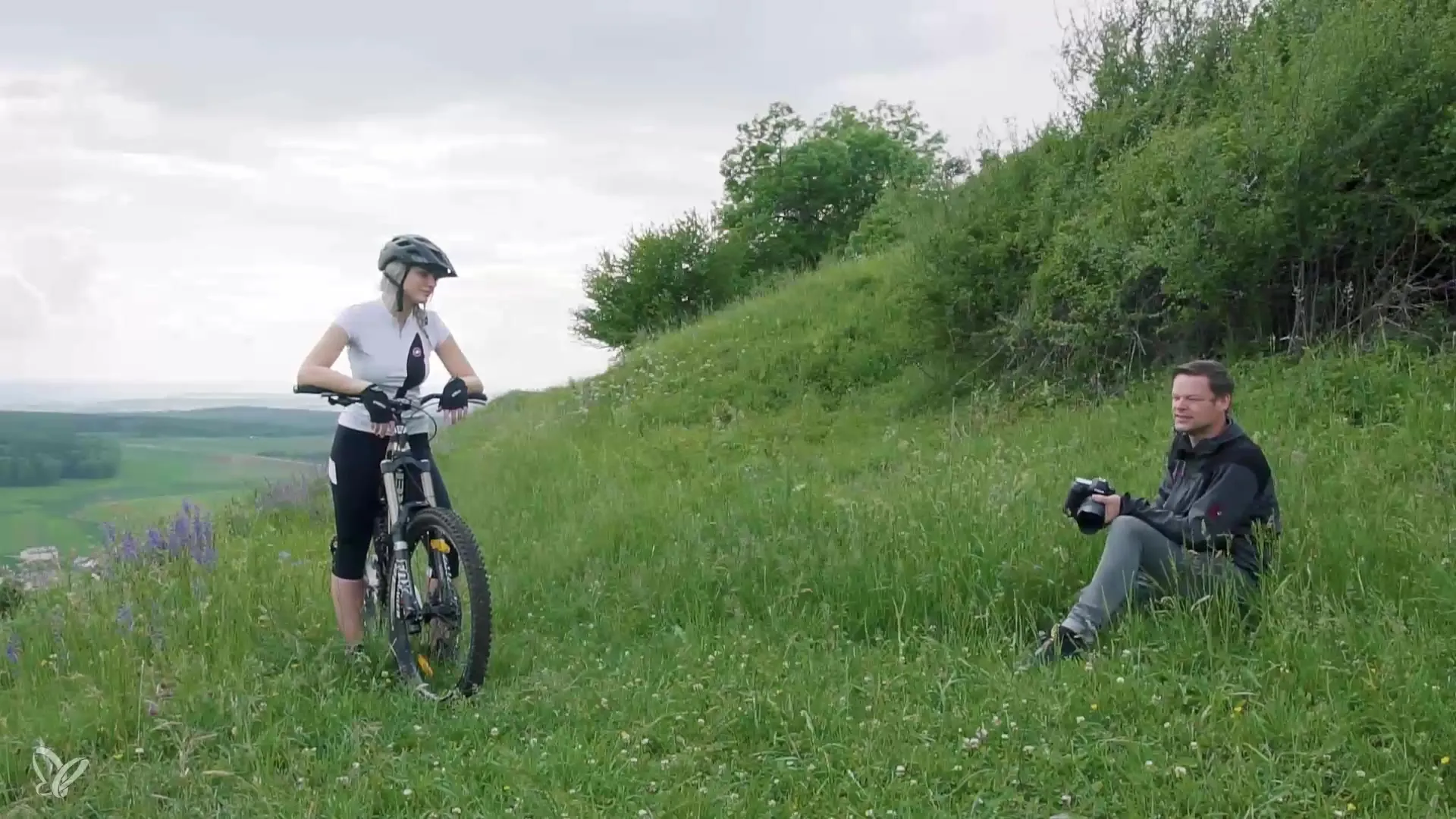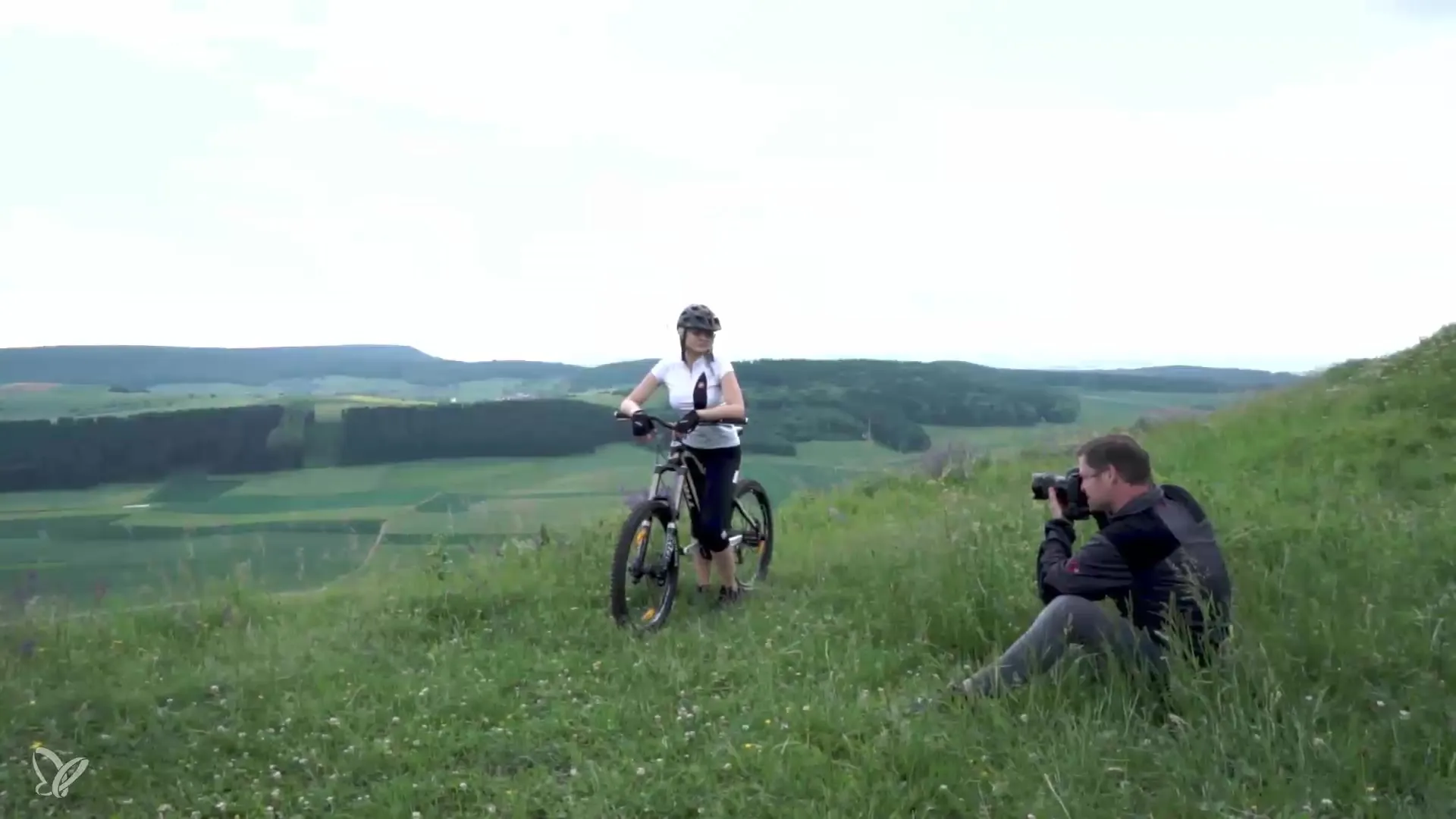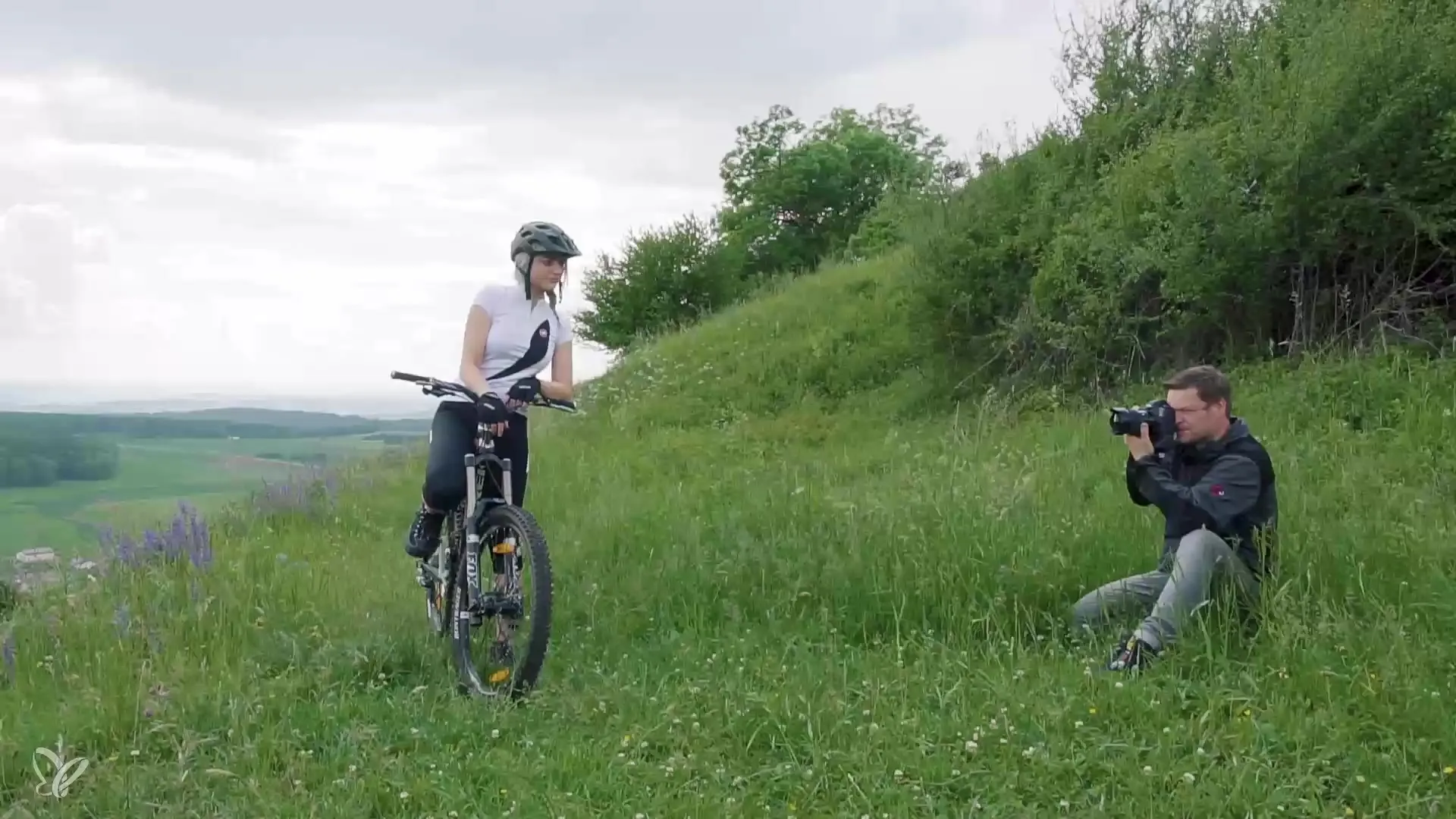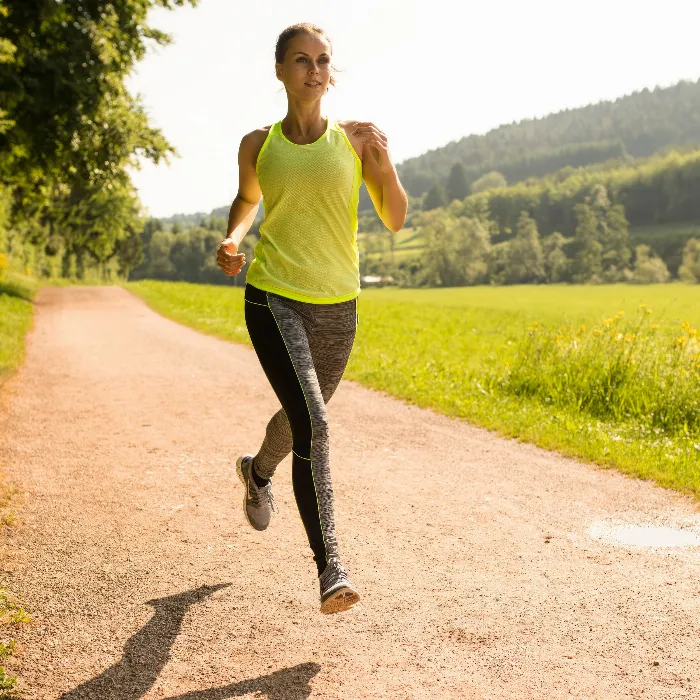Capturing sports motifs in nature is not only a technical challenge but also a way to preserve emotions and the dynamics of a moment. In this tutorial, you will learn how to achieve impressive portrait shots using multiple exposure techniques. We will not only show you the basics but also provide valuable tips to take your photographic creativity to the next level.
Key Insights
- The combination of portrait photography and landscape can deliver impressive results.
- HDR technique helps effectively manage high contrasts.
- Multiple exposure allows capturing different aspects of a scene in a single image.
- Pay attention to proper positioning and lighting to get the most out of your shots.
Step-by-Step Guide
First, a suitable location near Neudingen was found that offers a wonderful view. Here, the photographer decided to take portraits of Nicole on her bicycle.

To achieve this, you should first gain some distance and then ride towards the model. You will try to create a connection between the person and the landscape.
It is important for your model to step back a bit and change positions to improve the perspective. Ensure that all elements in the image are harmoniously integrated.
A high contrast between foreground and background is an ideal situation for HDR technique. In this case, we are dealing with a scene where the ground and the clouds exhibit high brightness differences simultaneously.

To take an HDR portrait, set your camera to a short exposure time; in this case, it was 1/500 seconds at f/4. The "three-stop mode" allows you to combine different exposures to optimally capture both bright and dark areas.
While taking the portrait, ensure your model is positioned correctly to take advantage of the best lighting conditions. A slight movement of the head or face can work wonders.
Then change the gaze direction of your model to bring better dynamics into the image. The focus should be on the surroundings; the head should be slightly turned to achieve a natural pose.

Once you have found a good position, you can ensure that the pose is appealing for both the portrait and the surroundings. Remember, this is not just about a classic portrait.

To create a blurred foreground and draw focus to the model, the camera plays a crucial role here. It needs time to “compute”, so patience is required.
Here, the feeling comes into play: The combination of foreground blur and the clear portrait in the background can create impressive depth. Ultimately, the goal was to capture the landscape and the sports equipment in a harmonious environment.
Summary – Staged Sports Photography: Portrait Shots with Multiple Exposure
In this tutorial, you have learned how to effectively implement portrait shots in a sports environment. By applying HDR techniques and skillful positioning of your model, you can create unique and emotional images that showcase both the person and the surroundings perfectly.
Frequently Asked Questions
How does HDR technique work in portrait photography?The HDR technique combines multiple exposures to emphasize the best details from bright and dark areas.
Can I make multiple exposures without a tripod?Yes, it is possible, but it requires a very steady hand and precise camera control.
What should I consider when choosing the background?The background should harmonize with the model's pose and emphasize the sport.
How important is the light source for my shots?Light is crucial; it influences the mood, feeling, and sharpness of the images.
Should I manually adjust the lighting?Yes, manual adjustment of the exposure can help you maintain control over the final result.


